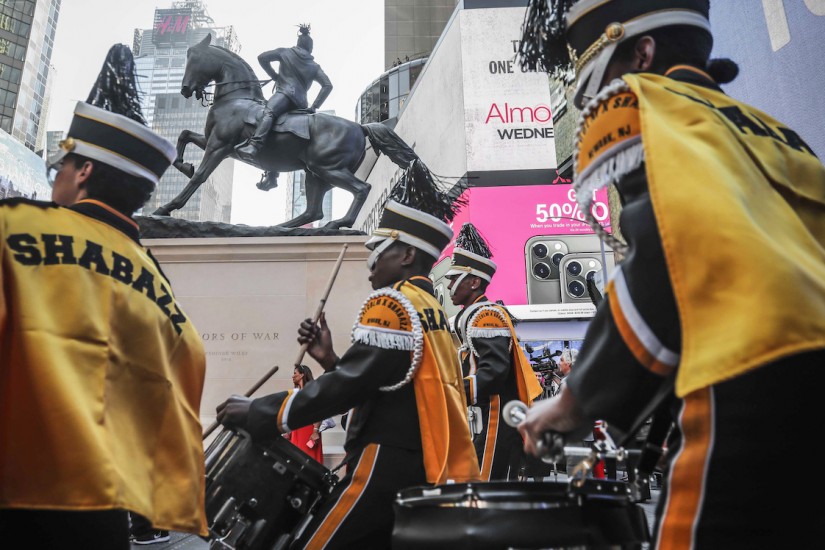On July 15, 2019, Maria del Pilar O’Cadiz learned that someone painted over one of her father’s murals—another one, that is. The news came in a text from her sister, who was driving home from work at an elementary school in Santa Ana, California. She had just passed the wall, on Raitt Street, to see it was a shocking white. When Pilar O’Cadiz received the text at work, she screamed. “My coworkers wondered if someone had died,” she says. “And it felt like someone had.”
Before it was whitewashed, the Raitt Street wall held a mural by artist Sergio O’Cadiz, who passed away in 2002. The mural, which was painted in 1994 by both the artist and local children, with the permission of the owners of the land the wall abutted, contained scenes of the old Santa Ana cityscape, with caballeros on horseback and children carrying banners that read “Love,” “Tolerance,” and “Peace,” among other messages. A painted scroll noted, in English and Spanish, that the mural was dedicated to “the children of Santa Ana and the people who work for their future.”
It was, as one can imagine, a beloved landmark for the community, which might explain why it escaped graffiti and tagging for nearly a decade. It was only in recent years that those depredations began to accumulate. There were some thoughts and discussions about restoring the mural to its original condition, but no action had been taken. Then, in July, neighbors spotted a solo artist—no one knows who it was—attempting to restore the mural, without the permission of the property owner or the O’Cadiz family, according to Voice of OC. For reasons that aren’t quite understood, the property owner had the entire mural painted over. “It’s silencing our history and our community’s value,” Pilar O’Cadiz says.
Sergio O’Cadiz Moctezuma was born in Mexico City in 1934. He studied architecture at the National Autonomous University of Mexico. He moved to Orange County around the time that the Chicano Movement, a civil rights effort aimed toward empowering Mexican-Americans and sprinkled with revolutionary themes, began to gain momentum. Perhaps the movement’s most significant and visible expression was in the form of murals. In the 1960s and 1970s, more than 2,000 were painted in Los Angeles alone, the vast majority by Chicanx muralists, according to a timeline from the exhibit ¡Murales Rebeldes! L.A. Chicana/Chicano Murals Under Siege, which documented the city’s disappearing murals (and is on display until the end of 2019).
